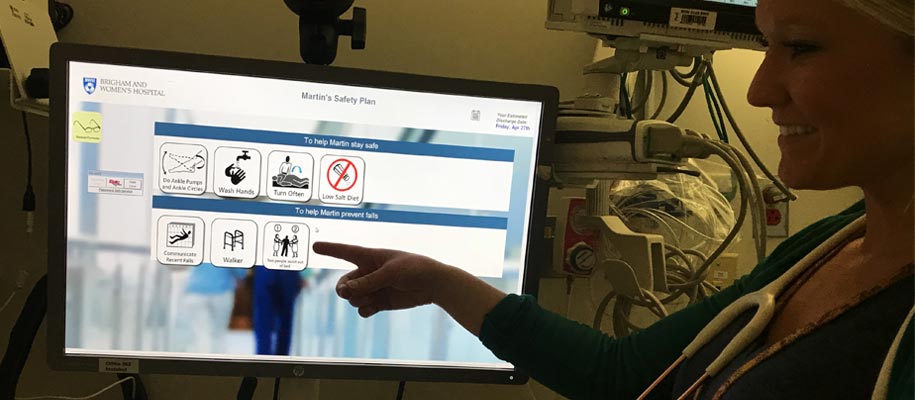
For almost four decades, Patricia Aylward, MS, RN, CCRN-K, nursing director in the Intermediate Medical Care Unit (MCU), has been a nurse at Brigham and Women’s Hospital (BWH), a place where she could practice nursing in a way that aligned with her personal values, offering care beyond the typical nursing duties.
Aylward also cherished the fact that nurses had a voice in most clinical initiatives at the hospital. When members of the BWH Patient Safety Learning Laboratory (PSLL) approached her about developing tools that patients and healthcare providers could use to reduce patient safety threats, Aylward and her nursing staff made their voices heard.
“We collaborated with physicians, nurses, scientists, and software developers to ensure that the technology interventions that PSLL proposed would fit within the nursing workflow, and provide the most benefit to our patients,” said Aylward.
Five years ago, the Patient Safety Learning Laboratory was established to make acute care more patient-centered by developing systems approaches to integrating health information technology, engagement mechanisms, and process design methods.
To improve patient safety and efficiency among providers, the PSLL developed the Patient Safety Dashboard, an application that gathers patient data from various parts of the electronic health record and displays it in a provider-facing dashboard. The dashboard displays patient data, including code status, health conditions, and opioid management. This information appears on a caregiver’s computer screen while they are visiting a patient. The application shows if a patient has a pressure ulcer, or may be at risk for falling and requires a walker or cane.
“This tool puts everyone on the caregiving team on the same page. It promotes dialogue among doctors and nurses by stimulating interdisciplinary conversations around patient safety concerns,” said Jennifer Cartright, MSN, a nurse director in the MCU.
The Patient Safety Dashboard also has a checklist that providers can use during rounds to quickly address patients’ most immediate issues. The checklist displays submitted orders and interventions that have been executed by the nursing staff.
The nursing staff also helped develop MySafeCare, an electronic application for patients, family, and friends to communicate safety issues and concerns with hospital staff during their stay. Select patients receive a tablet that allows them to see their lab work and communicate directly with their healthcare team.
“The collaborative way in which Patient Safety Learning Laboratory was built is great example of how the nursing staff helps develop technology and interventions that will benefit countless patients,” said Aylward.